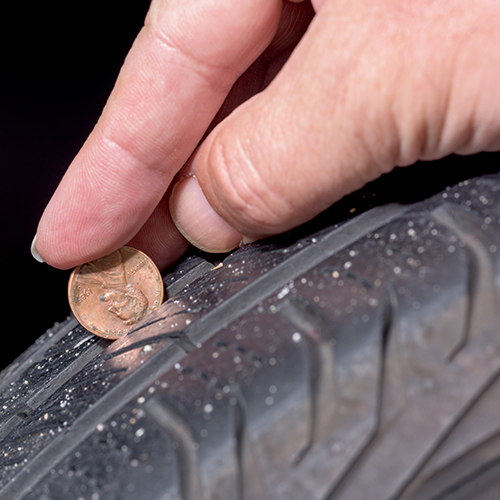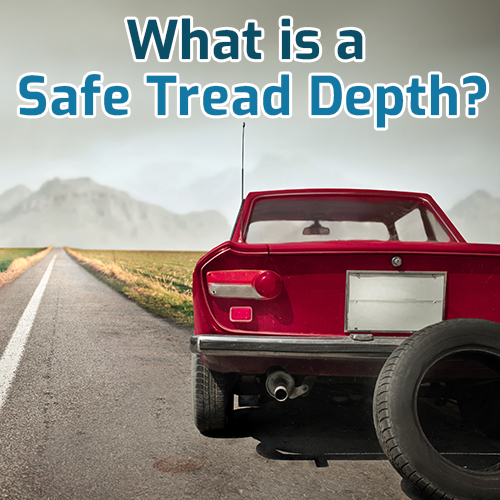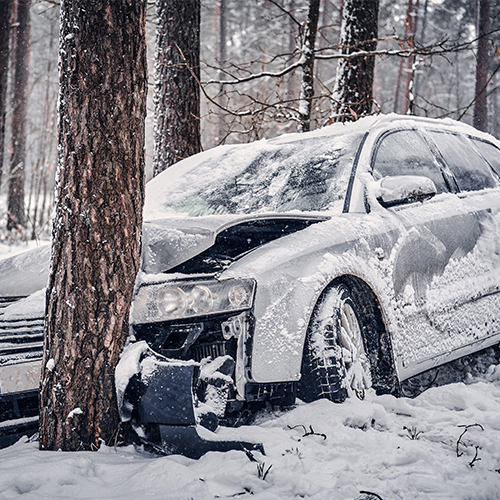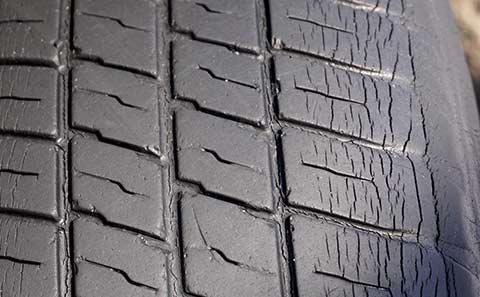Measuring the tire tread depth of your tires is an important safety precaution for vehicle owners to take. Ensuring that you have sufficient tread on your tires decreases the likelihood of your tires failing and causing an accident. This is why 44 of the 50 states have a minimum tread depth requirement for passenger vehicles.
How to Measure Tread Depth
You can use several different methods for measuring the tread depth on your tires. For the most accurate measurements, get a tire tread depth measurement tool which is sold at common auto parts stores. The tool looks a little like a syringe, and you can use it in a similar fashion as well.

A common method that owners use for measuring tire treads is to use a penny. Stand the penny on its side and turn Abraham Lincoln’s head downward in between the treads. If the top of Lincoln’s head sits even with your tire treads, this is about 2/32 and you need to replace your tires. See the diagram below for reference.
How much Tread is Safe?
The minimum legal tread depth in the majority of US states is set at 2/32 of an inch. Only California and Idaho require 1/32. Texas requires 3/32 for a vehicle to pass inspection (this is different than a state minimum required to be on the road). There are 6 states that have no minimum requirement (Arkansas, Montana, South Carolina, W. Virginia, New Mexico, and North Dakota).
Does this mean that your tires are safe if they have 1/32 in CA, or even safe with 3/32 if you are in Texas? No! Meeting the state requirement doesn’t mean that your tires are as safe as they can be. Most tire shops, safety experts, and industry publications recommend replacing your tires when they get down to no less than 4/32 of an inch.

Consumer Reports performed several tests to answer the question of when tires need replacing. They found that a tire with about ½ of its tread left loses approx. 15% of its traction on snow. The speed at which a tire would start to hydroplane also dropped approx. 8%. Stopping distance in wet weather was also increased by approx. 3 to 6 feet once the tire had half of its tread left.
If you notice low tire tread depth on your set, do not worry. At TireMart.com you can find the perfect tire set for your vehicle. Check out our offers and get the best tire prices available online.
Why is Tread Depth is Important?
The amount of tread on the tire affects how much water your tires can remove from beneath the. This affects your tires’ grip in wet conditions. The tread also helps to maintain friction between your tires and the road in snowy conditions.
So what happens if I don’t have enough tread? Your vehicle’s traction on the road will be reduced. You may start to hydroplane easier while in wet conditions and your ability to stop, turn, and control your vehicle in the snow will be reduced. The likelihood of having a tire failure increases.

It is important to have good tires mounted on your vehicle. Why? Well, for one thing, they will help you to prevent accidents! Learn how good tires prevent accidents by reading TireMart.com’s blog post about the topic!


